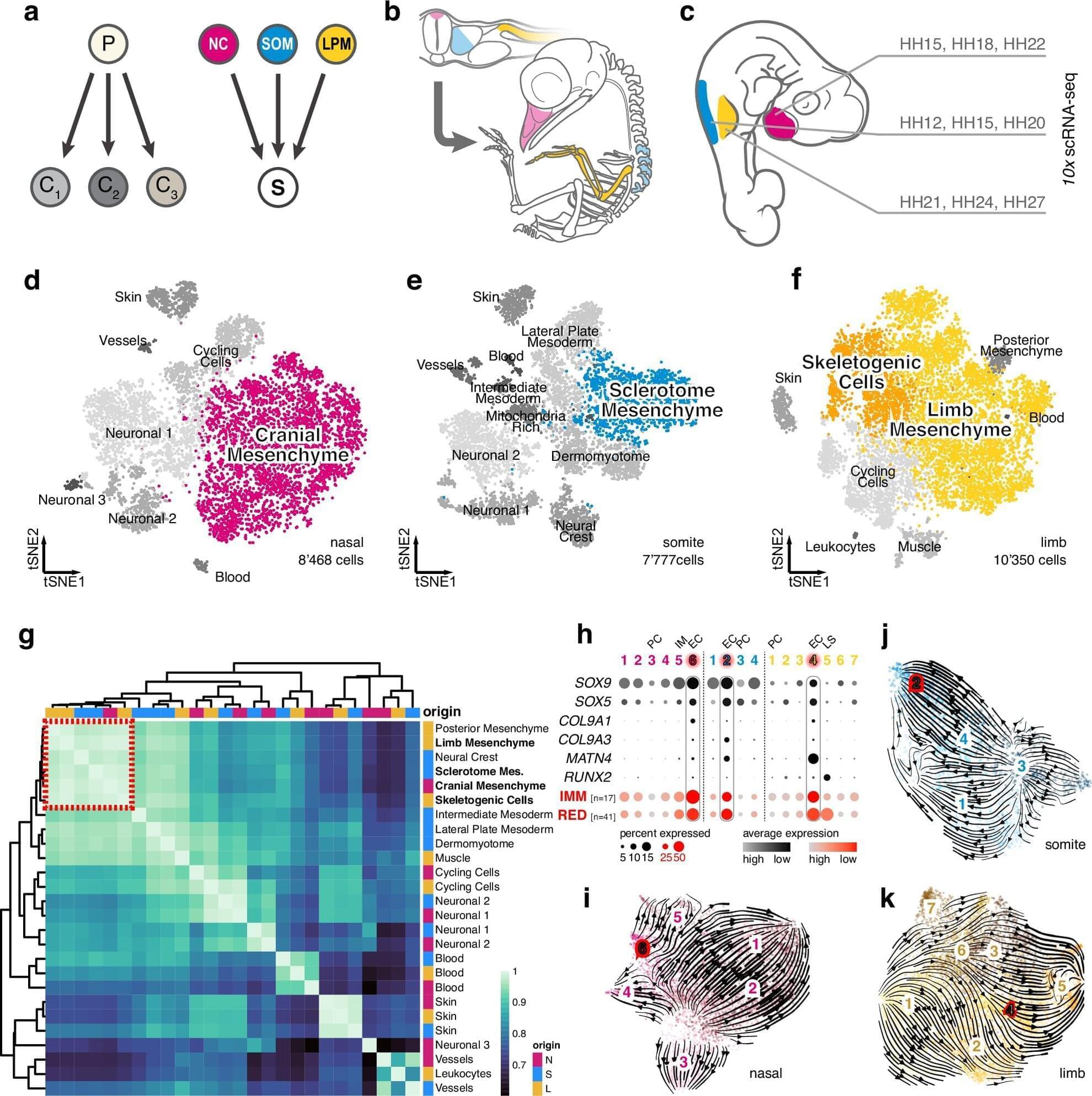In vertebrates, the skeleton of different regions of the body arises from different precursor cells. Researchers at the University of Basel have now discovered that these skeletal cells do not just differ in their developmental origin, but also in their gene regulation—which may be a key to the vertebrates’ evolutionary success story.
From the skull to the smallest bone in your pinky toe, the skeleton acts as internal scaffolding to give stability to the body, and forms protective cocoons around important organs. Despite their similar structure, however, not all bones are created equal: in vertebrates (including humans), the various parts of the skeleton arise from different groups of precursor cells during embryonic development.
During this process, each group produces its own set of regulator proteins and goes through its own developmental program to produce cartilage and bone. Researchers from the University of Basel have reported these findings in the journal Nature Communications.
